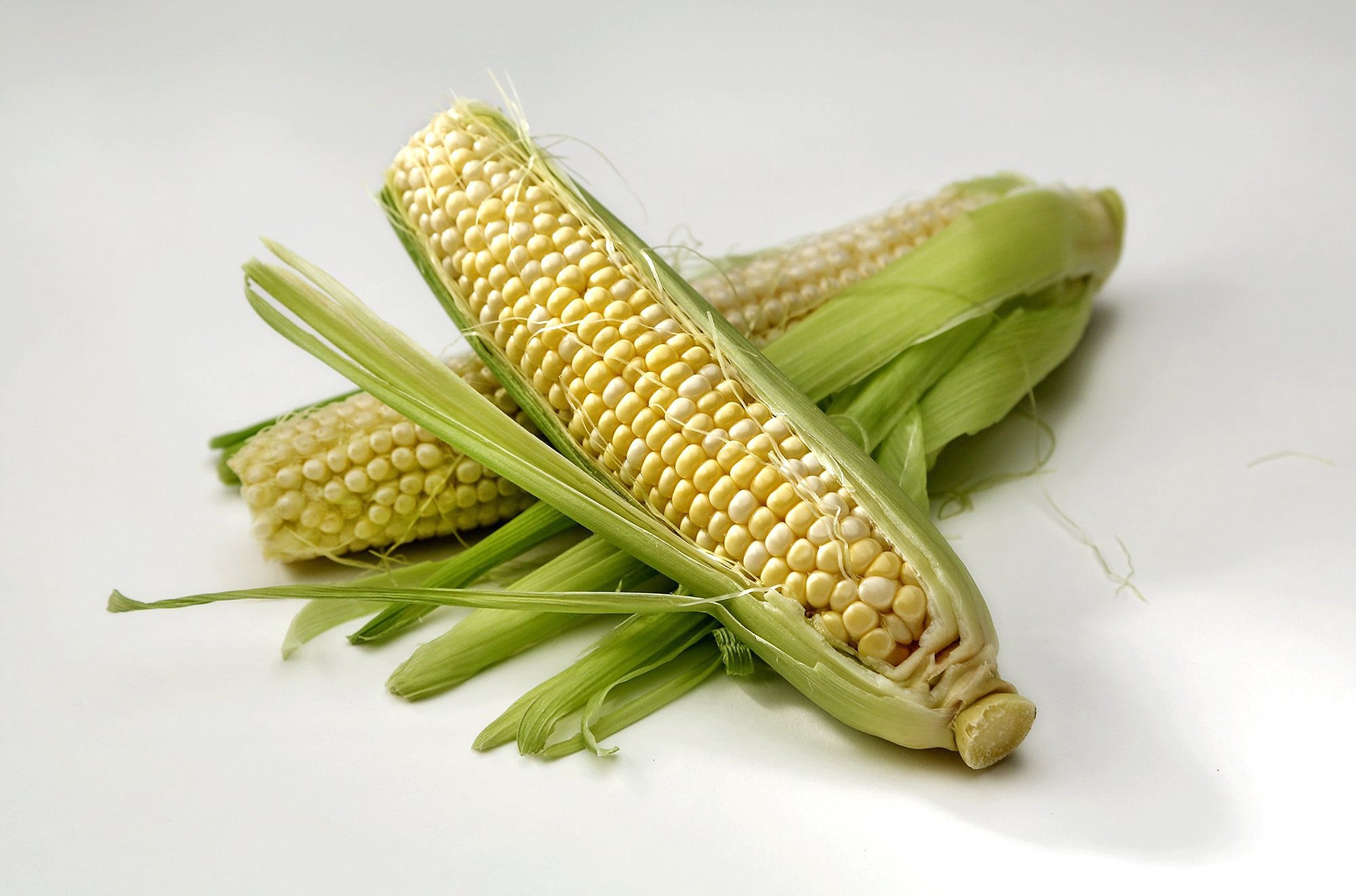Locally grown sweet corn has arrived, providing a healthy way to satisfy your sweet tooth.
Selective breeding of corn varieties allows us to enjoy many sweet and colorful varieties of corn. Popular varieties include Ambrosia, Delectable, Kandy Korn, and Silver Queen. Technically classified as a grain, sweet corn is harvested immature and enjoyed as a vegetable. Each stalk yields one to two ears of white or yellow corn, or a combination of the two.
Corn originated in southwestern Mexico 8,700 years ago. Though numerous varieties of sweet corn exist, there are only three main types that each of these varieties fall into: standard, sugar-enhanced or super sweet.
Standard sweet corn has the traditional tender and creamy sweet-corn texture and flavor with 5 to 15 percent sugar. Once picked, these quickly lose their flavor. It is recommended to have the water boiling before picking.
Sugar-enhanced sweet corn maintains the tenderness and texture of standard sweet corn with a higher sugar content (10 to 25 percent) and longer flavor retention. Sugar-enhanced sweet corn is preferred for fresh preparation, freezing or preserving because of kernel tenderness.
Super sweets contain 25 to 35 percent sugar, are less creamy, have a crisp kernel texture, and have the longest flavor retention. These varieties are preferred when mechanical harvesting, shipping or storage is required.
The best corn is the freshest corn. After picking, the natural sugars in the corn start converting to starch immediately. Up to 50 percent of the flavor can be lost within 12 hours. Store the corn in a perforated plastic bag in the coldest portion of the refrigerator. Use within two days.
Market displays of fresh corn should be shaded and away from heat sources for maximum sweetness and reduced microbial contamination.
Selecting a good ear of corn can be tricky. It can be considered poor etiquette to peel back the husk too far. If you do, try to just peek at the end. Look for corn that has husks that are tight around the corn cob, fresh, green, tightly folded and not dried out. The silk should be turning brown and sticky to the touch. If the tassels are back or dry, the corn is old.
To check out the corn without peeling the husk back, feel the kernels through the husk. Feel for kernels that are closely spaced, firm and round. Use a thumbnail to poke an end kernel to verify milky, white liquid. If the corn isn’t ripe, the liquid will be watery. If overripe, the kernel will have a tough exterior and doughy interior.
Shuck the corn just before use by pulling the husks down the length of the ear. Snap off the stem at the base. Under cold, running water rub the ear in a circular motion to remove the silk. Discard the husks and silk by composting or placing in the trash.
Two medium ears of corn will give you about 1 to 1¼ cups of corn kernels.
Fresh preparations include boiling, steaming, grilling, roasting, sautéing or microwaving. Do not add salt to the boiling water or overcook because it toughens the kernels.
Freezing is preferred for preserving sweet corn, however, dehydrating, pressure canning, and pickling are also options. Visit the WSU Extension website, at ext100.wsu.edu/clark/healthwellness/foodpreservation, for free recipes, information, and downloadable how-to publications for each method.
Just as people enjoy sweet corn, so do our dogs. Cut the kernels off the cob and let them enjoy. Do not give dogs corn cobs as they are not digestible and may result in blockages requiring surgery for removal.
Leigh Rosenberger is a WSU Clark County Extension master food preserver. For more information, call the Master Food Preserver program at 360-697-6060, ext. 5366, or visit ext100.wsu.edu/clark/healthwellness.




